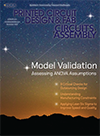News
The facility also houses quality operations, sales and technical support.
President Greg Evans said in a press statement, "This facility addresses the tremendous demand for our solder paste by the Chinese market. It is also the next step in our strategy for providing world-class service and support throughout the world."
Indium also has manufacturing sites in Singapore, the U.K. and the U.S.
Other keynoters during the Feb. 22-24 event are:
- Walt Custer, president, Custer Consulting Group, on the industry economy .
- Jim McElroy, CEO, the National Electronics Manufacturing Initiative, on the 2004 NEMI roadmap of future manufacturing needs.
- Pilot Burt Rutan, founder, Scaled Composites and SpaceShipOne, on winning the $10 million Anasari X Prize for reaching space twice in a two-week span using a privately manned rocketship.
Yet despite the increasing popularity of low-loss photoimageable waveguide materials, opportunities will continue to emerge for low-cost, mechanically and optically stable alternative approaches, says BPA Consulting Ltd. The firm also found that over 85% of backplanes are proprietary in design.
Sales of backplanes will grow from $1.99 billion this year to $2.11 billion in 2005 and $2.48 billion in 2009, or 9.8%, BPA forecasts.
The report identifies demand for low-loss/low-dielectric constant laminates, high-speed power connectors, advanced backplane fabrication and assembly, and high-speed (10 Gbps and above) channel design services. The report also analyzes the impact of new design standards such as the Advanced Telecommunication Computing Architecture (ATCA).
Press Releases
- K&F Electronics Boosts Production with New Hanwha SMT Line
- Luminovo Appoints SaaS Veteran Clifton Lobo as VP Global Sales to Accelerate International Growth
- Johan Stormlund Joins Inspectis AB as Marketing and Sales Manager, Industrial Applications
- Altus Brings Heller’s Revolutionary Short-Cycle Vacuum Reflow Oven to the UK and Ireland


